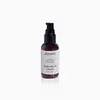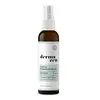What's inside
What's inside
 Key Ingredients
Key Ingredients

 Benefits
Benefits

 Concerns
Concerns

 Ingredients Side-by-side
Ingredients Side-by-side

Water
Skin ConditioningPropanediol
SolventUrea
BufferingCaprylic/Capric Triglyceride
MaskingSodium PCA
HumectantSodium Benzoate
MaskingPotassium Sorbate
PreservativeSodium Hyaluronate
HumectantPanthenol
Skin ConditioningHydroxyethylcellulose
Emulsion StabilisingHyaluronic Acid
HumectantAloe Barbadensis Leaf Powder
Skin ConditioningCitric Acid
BufferingAllantoin
Skin ConditioningPorphyra Umbilicalis Extract
Skin ConditioningChamomilla Recutita Extract
Skin ConditioningUsnea Barbata Extract
Cucumis Sativus Fruit Extract
EmollientWater, Propanediol, Urea, Caprylic/Capric Triglyceride, Sodium PCA, Sodium Benzoate, Potassium Sorbate, Sodium Hyaluronate, Panthenol, Hydroxyethylcellulose, Hyaluronic Acid, Aloe Barbadensis Leaf Powder, Citric Acid, Allantoin, Porphyra Umbilicalis Extract, Chamomilla Recutita Extract, Usnea Barbata Extract, Cucumis Sativus Fruit Extract
 Reviews
Reviews

Ingredients Explained
These ingredients are found in both products.
Ingredients higher up in an ingredient list are typically present in a larger amount.
Hyaluronic acid is naturally found in healthy skin. It is a humectant, meaning it draws moisture to your skin.
This ingredient helps hydrate, soothe, and protect the skin.
What makes hyaluronic acid so hydrating? It has the capacity to bind or hold large amounts of water.
Fun fact: It is already naturally found in our bodies, such as the fluids of our eyes and our joints.
Studies find this ingredient to have anti-inflammatory and anti-microbial properties. This can help speed up wound-healing.
Hyaluronic acid can be irritating if the molecule has a low-molecular weight, or if the molecules are small.
One study found low-molecular weight hyaluronic acid to be pro-inflammatory, meaning some people may experience irritation. This is because our bodies use hyaluronic acid in the wound-healing process to signal to our bodies, via irritation, that something needs healing.
The same study found high-molecular weight hyaluronic acid to be anti-inflammatory.
These are some other common types of Hyaluronic Acid:
Learn more about Hyaluronic AcidUrea is also called carbamide and is the diamide of carbonic acid. In cosmetics, urea is used to hydrate the skin. It also provides exfoliation in higher concentrations.
As a humectant, urea helps draw moisture from the air and from deep within the skin. This helps hydrate your skin. Studies show urea is an effective moisturizer for dry skin conditions. 40% urea is typical in medications for treating eczema and other skin conditions.
Urea has the strongest exfoliation effect in concentrations higher than 10%. It is a keratolytic agent, meaning it breaks down the keratin protein in the top layer of skin. This helps remove dead skin cells and flaking skin.
In medicine, urea has been shown to help increase the potency of other ingredients, such as fungal treatments.
Humans and animals use urea to metabolize nitrogen-containing compounds. Urea is highly soluble in water. Once dissolved, it is neither acidic nor alkaline.
Learn more about Urea